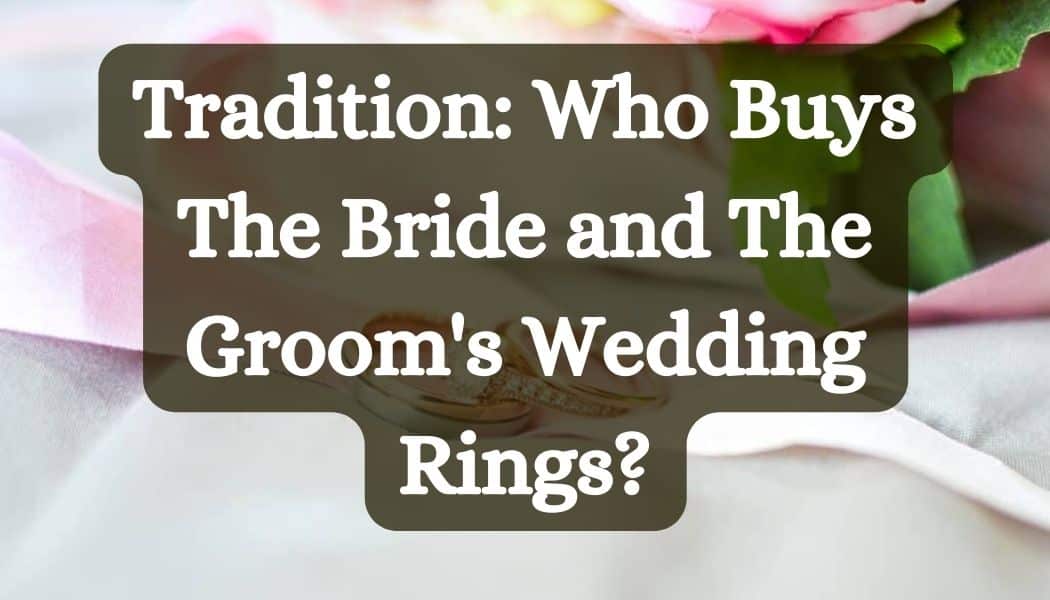
Wedding rings are timeless symbols of love and commitment, worn by couples to signify their marital bond. Exchanging wedding bands is steeped in tradition and significant in various cultures worldwide. However, the need to clarify who is traditionally required to buy a partner’s wedding band is commonplace in this generation.
Although traditions have been changing in different cultures, what used to be is still practiced by some families. Traditionally, the groom purchases the bride’s wedding band, and the bride and her family buy the groom’s wedding band.
This blog post will delve into the customs and practices surrounding purchasing and presenting wedding rings, exploring who traditionally buys them in different cultures.
Table of Contents
The Significance of Wedding Bands
Wedding bands hold a special place in the hearts of couples, representing their love, commitment, and eternal bond. Many partners will take offence at their significant other for not wearing their wedding band and for a good reason. Some of them include the fact that wedding bands are the following:
Sign of Love and Commitment
Wedding bands for women, and You’ll find MensWeddingBands are a tangible symbol of love and commitment between partners. They represent the emotional and dutiful commitment of partners to each other.
The circular shape represents eternity, with no beginning or end, mirroring the everlasting nature of marriage. At the same time, the designs on the band describe the beauty that the couple wishes to experience in their marital life.
Binder of Marital Vows
During a wedding ceremony, the couple makes promises to assure each other of their commitment in the presence of the people they love and respect. These promises are meant to be profound and should guide them in remaining loyal to their partners. However, it is easy to forget those words, and that’s where wedding bands come in.
Wedding bands are a constant reminder of the vows exchanged during the marriage ceremony. They symbolize the promises made to honour and cherish each other as a silent witness to the commitment between spouses.
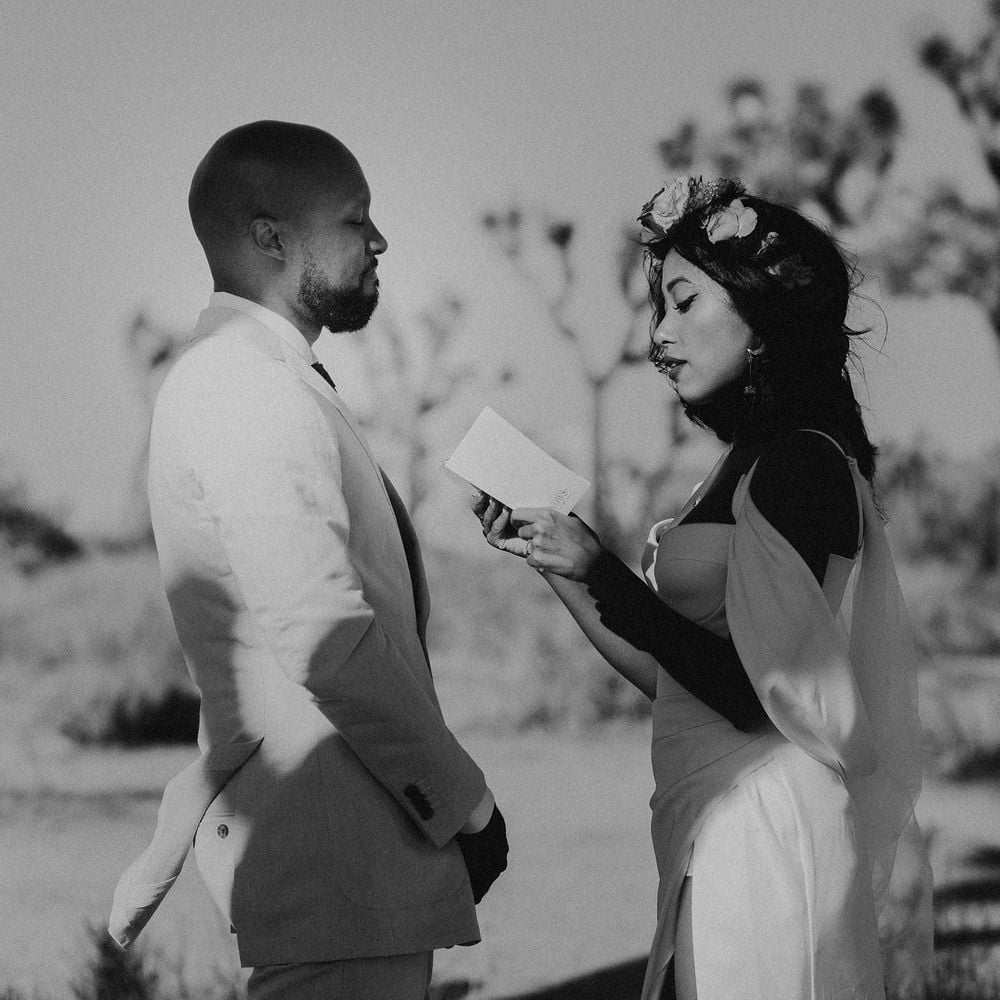
Public Announcer of Marital Status
Whether you have a private or publicized wedding, your wedding band is the one item that tells the public of your marital status. It helps you to update your relationship status without using words.
Wedding rings publicly announce individuals’ marital status, signifying their unavailability for romantic pursuits. They are a visible marker to the outside world, letting others know the wearer is committed to their spouse.
Promotes Personal Character
Before being deemed a person of good character, you must possess qualities such as faithfulness, dependability, loyalty, and honesty. These qualities influence how you’re perceived and the level of reverence you’re given in society.
Wearing a wedding band is often associated with loyalty, faithfulness, and responsibility. Adorning a wedding ring can serve as a personal reminder to remain faithful to the values and virtues that marriage represents.
Advances Personal Style and Finesse
Wedding bands used to be strictly for binding marital vows and announcing matrimonial statuses. However, they have become essential in couples’ fashion and style.
Wedding bands have evolved, symbolizing love and a fashion statement. With many designs, metals, and gemstones available, couples can choose rings that reflect their style, adding a touch of elegance and finesse to their overall look.
Presentation of Wedding Bands in Different Traditions
Weddings are considered sacred in many cultures, and their traditional wedding ceremonies usually involve exchanging a band to signify the binding of the couple’s vows to each other. Whether you’re African, Asian, Jewish, English, or any different culture, you’ll likely present and receive a wedding band to and from your partner at your wedding ceremony.
Different cultures worldwide have different ways of presenting wedding bands during their ceremonies. Some of them include:
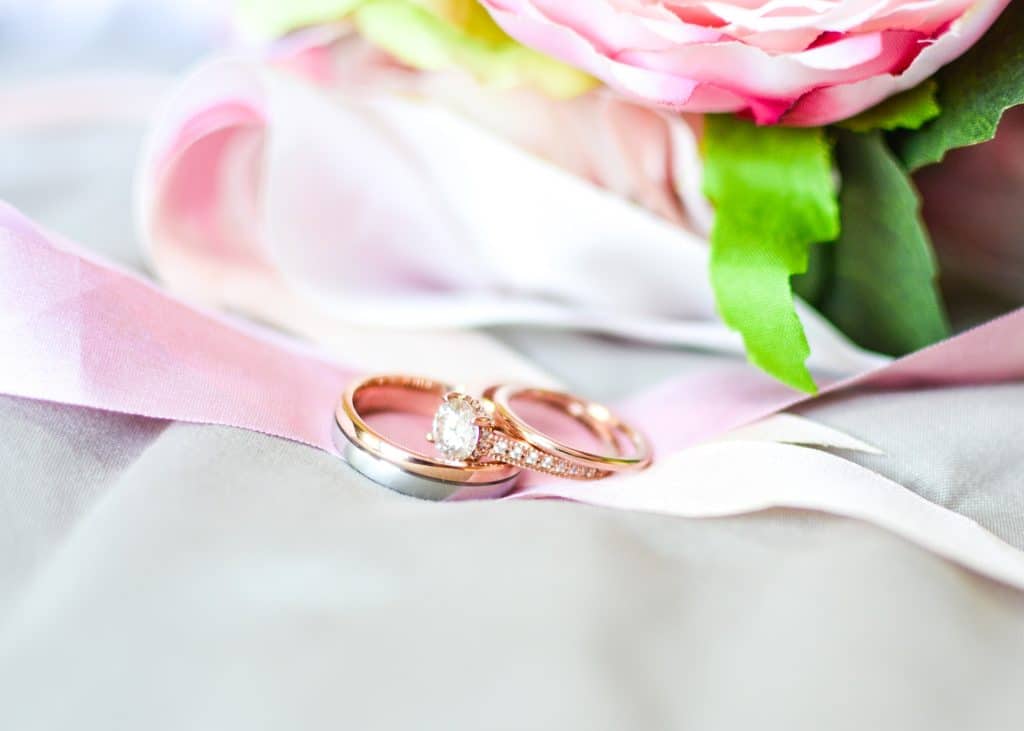
In the Traditional Western Wedding
In a traditional English wedding, as many individuals and churches have adopted, the presentation of wedding bands holds significant symbolic and ceremonial importance. The moment of exchanging rings occurs during the wedding ceremony, specifically after the vows and before the pronouncement of marriage. The couple stands side by side, facing each other, as the officiant or the designated person leading the ceremony guides them through the ring exchange.
It is customary for the best man to carry and present the rings during the ceremony. The best man traditionally keeps the rings safe until the appropriate time.
Sometimes, a young family member, such as a young boy or girl, may be designated as the ring bearer. The ring bearer is usually a child close to the couple, and their role is to carry the rings down the aisle, often on a decorative pillow or cushion.
When the time comes for exchanging rings, the best man hands the rings to the officiant. The officiant may briefly hold the rings and say a few words about the significance of the wedding bands, emphasizing their symbolism of eternal love and commitment.
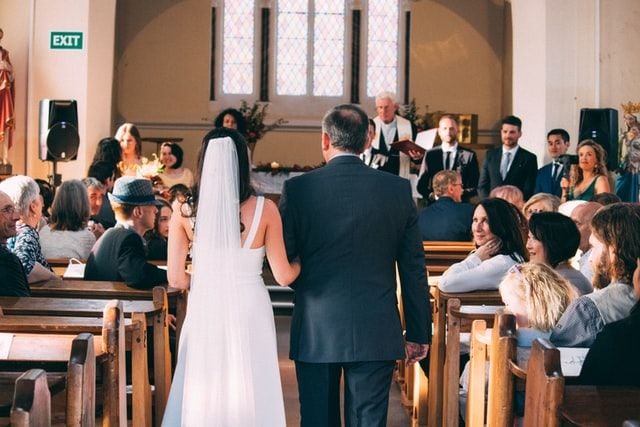
The officiant may offer a blessing or ask the couple to repeat personalized vows to each other before proceeding with the ring exchange. This moment allows the couple to express their love and promises before sliding the rings onto each other’s fingers.
The couple holds each other’s rings, usually in their right hands, and faces each other. They may recite standardized vows or speak their heartfelt words as they slide the rings onto each other’s fingers. This act signifies their commitment to love, honour, and cherish one another.
Once the rings are exchanged, the officiant announces the couple as husband and wife or partners, symbolizing the union of their lives. The couple may then seal the exchange with a kiss, and the ceremony proceeds to its next phase.
It’s worth noting that while these elements form the basis of a traditional English and Church wedding, modern couples often customize their ceremonies to reflect their unique preferences and beliefs. Therefore, variations in the presentation of wedding bands may exist based on individual choices and cultural backgrounds.
In the Traditional Scandinavian Wedding
Scandinavian wedding customs often involve the exchange of engagement rings rather than wedding bands. However, in modern Scandinavian weddings, the couple typically exchange wedding rings during the ceremony, with each partner receiving a ring.
The ring ceremony is when the exchange of wedding rings usually takes place. After the couple has exchanged their vows, the officiant or the person leading the ceremony guides them through the ring exchange.
Unlike some cultures where only the bride receives a ring, Scandinavian weddings often feature a double ring ceremony, where both partners give and receive a ring. The officiant typically holds the rings and presents them to the couple at the appropriate moment. The rings may be placed on a small cushion, stored in a special box, or presented in the officiant’s hands.
Before exchanging the rings, the officiant may bless or share wisdom about marriage, love, and commitment. This moment allows for reflection on the significance of the wedding bands and the promises they represent.
The couple stands facing each other, often holding hands, preparing to exchange rings. They may recite vows or make personal statements before sliding the rings onto each other’s fingers.
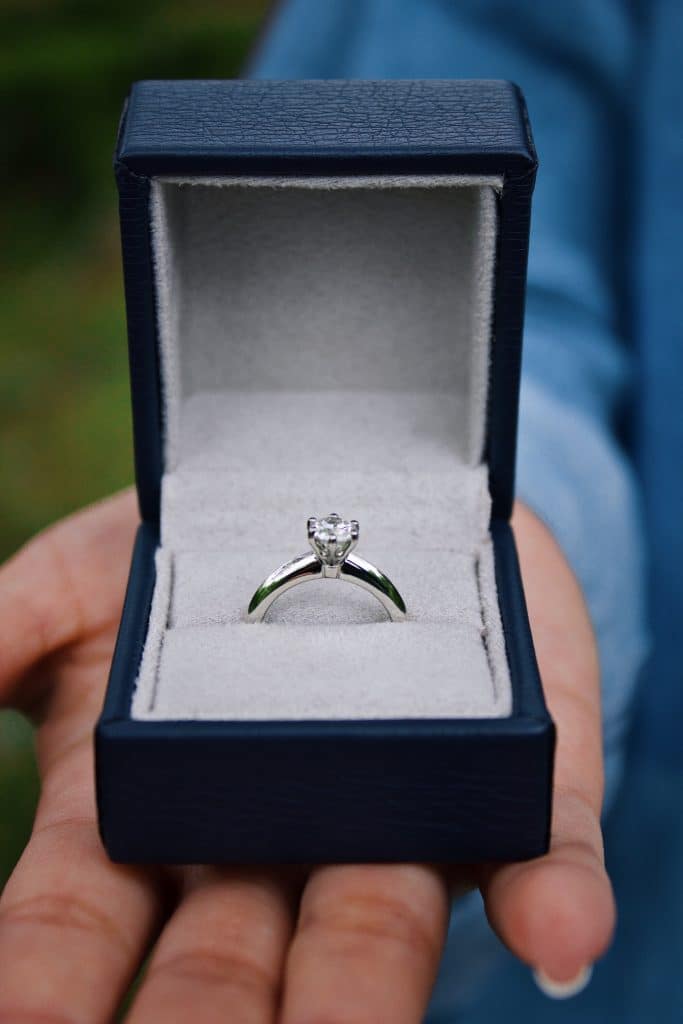
In Scandinavian tradition, wedding bands are typically worn on the right hand during the engagement period and then switched to the left after the wedding ceremony. The rings are placed on the ring finger of the left hand during the exchange, symbolizing the bond of marriage.
Once the rings are exchanged and placed on the fingers, the officiant or the couple themselves may announce the couple’s union as husband and wife or partners. The exchange of rings is often followed by applause and well-wishes from family and friends in attendance.
It’s important to note that traditions may vary slightly across different Scandinavian countries, such as Sweden, Norway, Denmark, and Finland. Additionally, modern couples often incorporate personal touches and variations into their wedding ceremonies, so there may be deviations from these traditional practices based on individual preferences and cultural influences.
In the Traditional Jewish Wedding
In a traditional Jewish wedding, the presentation of wedding bands is an integral part of the ceremony, symbolizing the couple’s commitment and creating a lifelong bond.
The Betrothal Ceremony, Kiddushin, starts a Jewish wedding ceremony. The groom traditionally presents the wedding band to the bride as a symbol of his commitment and intention to marry her.
During the betrothal ceremony, the groom places the wedding ring on the bride’s right index finger. In some Jewish communities, the groom may also recite a traditional Hebrew phrase, often “Harei at mekudeshet li betaba’at zu kat Moshe Yisrael” (Behold, you are consecrated to me with this ring according to the laws of Moses and Israel). This act symbolizes the groom’s formal acceptance of the bride as his wife.
In traditional Jewish weddings, the bride does not typically present a ring to the groom during the ceremony. However, some modern couples incorporate a mutual ring exchange where the bride presents a ring to the groom as a symbol of their equal commitment.
The officiant usually witnesses the ring exchange, the couple’s family, and the assembled guests. According to Jewish law, this act is considered a legal and binding part of the wedding ceremony.
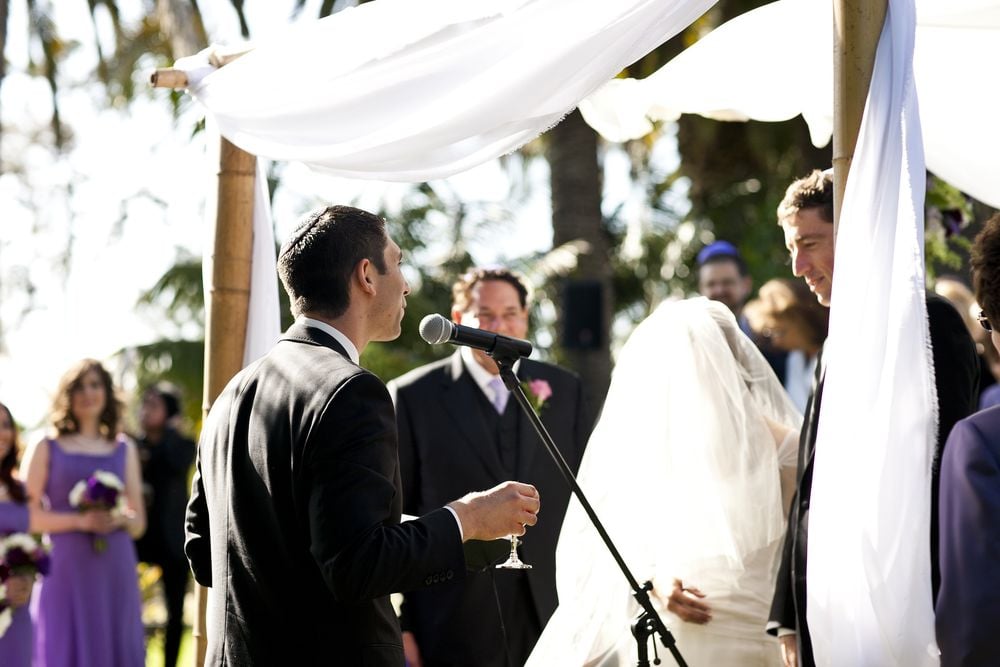
After the ring exchange, the couple signs the Ketubah, a Jewish marriage contract. The Ketubah outlines the couple’s responsibilities to each other and includes various traditional and personal commitments. The signed Ketubah is often displayed prominently during the wedding reception.
Following the ring exchange and Ketubah signing, seven blessings, known as Sheva Brachot, are recited over a cup of wine. These blessings, typically delivered by a rabbi or an honoured guest, celebrate the joyous union of the couple and wish them happiness, love, and prosperity.
After the wedding ceremony, it is customary for the groom to break a glass by stepping on it. The breaking of the glass symbolizes several things, including the destruction of the Temple in Jerusalem and a reminder of the frailty of human relationships. It also serves as a joyful exclamation to conclude the ceremony, and the guests respond with shouts of “Mazel Tov!”
In the Traditional African Wedding
African wedding traditions differ across the continent, with various tribes and regions having their customs. In some African cultures, the groom presents the bride with a wedding band, while exchanging rings is not a prevalent practice in others.
The Maasai people residing in Kenya and Tanzania traditionally do not exchange wedding rings. Instead, the bridegroom often presents the bride with gifts such as jewelry, livestock, or clothing to symbolize their commitment.
In Zulu weddings, exchanging wedding bands is not a widespread practice. Instead, the bridegroom’s family presents gifts, known as “lobola,” to the bride’s family as a symbol of respect and gratitude.
Yoruba weddings focus on the traditional engagement ceremony called the “Introduction” or “Kó́rẹ̀dugba.” This ceremony involves the formal introduction of both families, the exchange of gifts, and the performance of various customs, but it does not typically involve the exchange of wedding rings. However, in modern times, many couples integrate the exchange of wedding rings into their wedding ceremonies.
In Igbo culture, the exchange of wedding bands is not a common tradition. Instead, significant emphasis is placed on traditional marriage rites and ceremonies, which vary depending on the specific Igbo community.

In the Traditional Asian Wedding
Asian wedding traditions also vary depending on the country and cultural background. In some Asian cultures, such as India, the bride and groom exchange rings during the wedding ceremony. However, in other Asian traditions, the concept of wedding rings may not be as prominent.
Traditional Chinese weddings do not typically involve the exchange of wedding bands. Instead, the focus is on elaborate rituals such as the Tea Ceremony and exchanging gifts and jewelry between families.
In Japanese weddings, the exchange of wedding rings is a relatively recent practice influenced by Western traditions. Traditional Japanese wedding ceremonies often involve rituals like sharing sake (san-san-kudo) and exchanging ceremonial items like folded paper (origami) or symbolic gifts.
Korean weddings traditionally do not exchange wedding bands. Instead, they often exchange wooden geese figurines called “garum tteok” to symbolize fidelity and lifelong companionship. In a Korean wedding ceremony, the couple may also wear traditional “hanbok.”
In certain Indian ceremonies, exchanging wedding bands may not be a central ritual. Instead, Indian weddings are rich in traditions and customs for various regions and religions. For example, in Hindu weddings, tying a sacred thread (mangalsutra) around the bride’s neck is a significant symbol of marriage.
In many Indonesian wedding ceremonies, customs such as the “siraman” (water pouring ceremony) and the “pengajian” (religious sermon) are observed to symbolize the union of the couple.
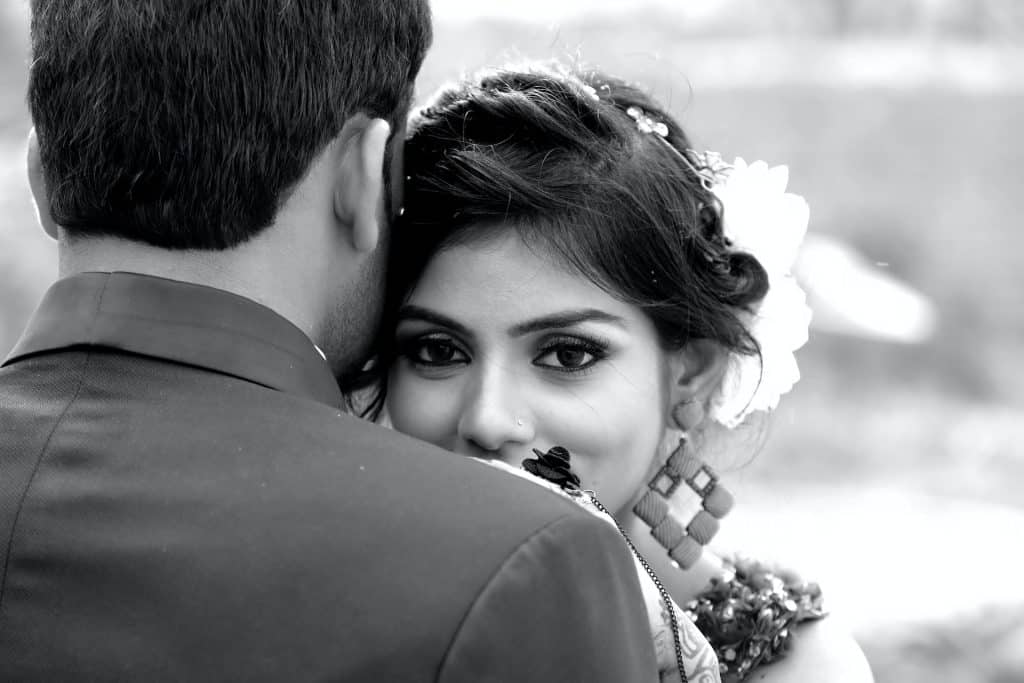
Who Buys the Bride’s Wedding Band?
According to traditional customs, purchasing the bride’s wedding band falls on the groom or his family. This tradition may have originated from historical practices where the groom’s family provided the bride with valuable gifts to secure the marriage alliance. Over time, this evolved into the groom taking on the responsibility of buying the bride’s wedding ring as a symbol of his commitment and ability to provide for her.
Buying the bride’s wedding band also signifies the groom’s intention to support and care for his future wife. It symbolizes his role as a protector and provider, ensuring the bride is adorned with a ring representing their union and commitment.
Who Buys the Groom’s Wedding Band?
Traditionally, the responsibility of purchasing the groom’s wedding band falls on the bride or her family. This practice stems from the idea that the bride’s family is responsible for the wedding expenses, including the groom’s ring. It symbolizes the bride’s commitment to her groom and willingness to support him in their journey of marriage.
However, modern practices have seen a shift in this tradition, with couples often choosing and purchasing their wedding bands together. This symbolizes equality and shared responsibility in the union, reinforcing the idea that both partners contribute to the financial aspects of their relationship.
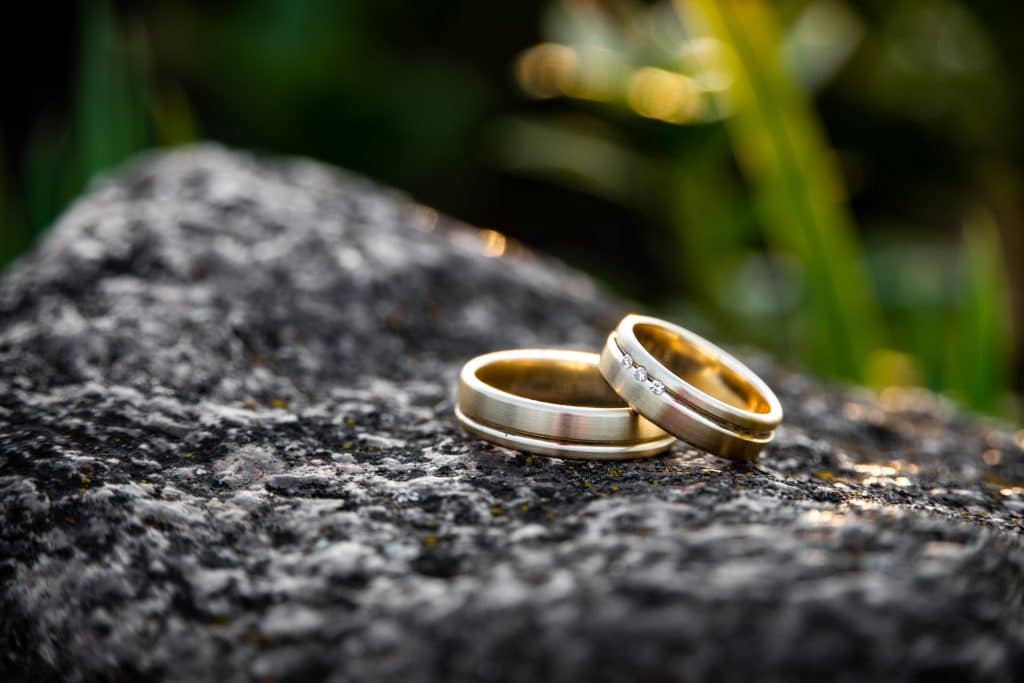
Wrapping Up
Wedding bands are significant in various cultures and symbolize love, commitment, and unity. The purchase and exchange of wedding rings have evolved, reflecting cultural traditions and individual preferences. Whether it’s the groom or the bride who buys the rings, the act symbolizes their commitment and the beginning of a lifelong journey together. Ultimately, the actual value of wedding bands lies in the love and devotion shared between the couple, regardless of who purchases them.
Summary: Wedding Rings
- Wedding bands hold significance in various cultures, representing love, commitment, and eternal bond.
- Traditionally, the groom purchases the bride’s wedding band, while the bride and her family buy the groom’s ring.
- Wedding bands serve as a sign of love, commitment, and the marital vows exchanged during the ceremony.
- They publicly announce the wearer’s marital status and promote personal character and style.
- Different cultures have their own customs for presenting wedding bands during ceremonies.
- In traditional Western weddings, the best man carries and presents the rings, and the couple exchanges them after the vows.
- Scandinavian weddings often feature a double ring ceremony, with both partners giving and receiving a ring.
- In traditional Jewish weddings, the groom presents the bride with a ring, symbolizing his commitment, while some modern couples include a mutual ring exchange.
- African and Asian wedding traditions vary, with some cultures exchanging rings and others emphasizing different customs.
- The responsibility of buying the bride’s wedding band traditionally falls on the groom, while the bride or her family buys the groom’s ring, but modern practices often involve couples choosing and purchasing the rings together.
- Wedding bands symbolize unity, regardless of who purchases them, and their true value lies in the love and devotion shared between the couple.
FAQ: Buying Wedding Rings and Traditions Unveiled
Who traditionally buys the bride’s wedding band?
Traditionally, the groom or his family purchases the bride’s wedding band. It symbolizes the groom’s commitment, ability to provide, and his role as a protector.
Is it necessary for the bride’s family to buy the groom’s wedding band?
According to tradition, the bride and her family are responsible for buying the groom’s wedding band. However, modern practices often involve couples choosing and purchasing their wedding bands together.
Can the couple choose and purchase their wedding bands together?
Absolutely! Many couples today choose and purchase their wedding bands together, symbolizing shared responsibility and equality in their union.
Are there any cultural variations regarding who buys the wedding rings?
Yes, cultural variations exist. In some African cultures, for example, the groom presents the bride with gifts instead of wedding rings. In certain Asian traditions, the exchange of wedding bands may not be as prominent.
What if the couple wants to deviate from traditional practices?
Couples have the freedom to customize their wedding ceremonies and ring-buying process according to their preferences. Whether they choose to follow traditions or create their own unique rituals, the important thing is to express their love and commitment to each other.


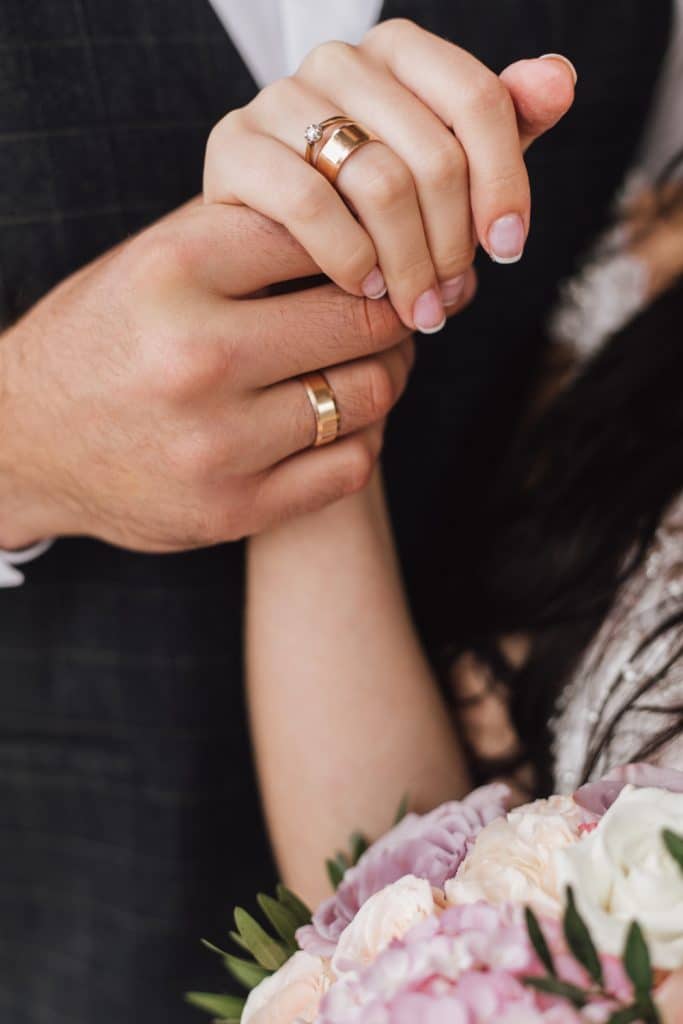





![Celebrity-Inspired Wedding Dresses from the Red Carpet to the Aisle [2024]](https://i0.wp.com/www.bestforbride.com/bridal-shop/wp-content/uploads/2023/12/Experience-the-Magic-Celebrity-Inspired-Wedding-Dresses-from-the-Red-Carpet-to-the-Aisle.jpg?ssl=1)
![Stay Prepared for Unexpected Last-Minute Wedding Dress Emergencies: 8 Key Scenarios [2024]](https://i0.wp.com/www.bestforbride.com/bridal-shop/wp-content/uploads/2023/12/Stay-Prepared-for-Unexpected-Last-Minute-Wedding-Dress-Emergencies-8-Key-Scenarios.jpg?ssl=1)




